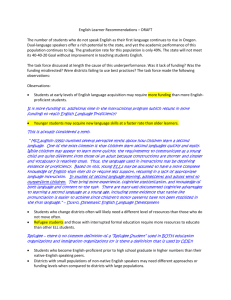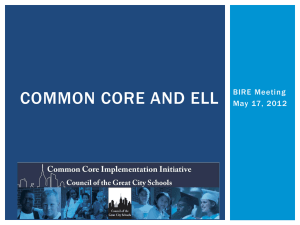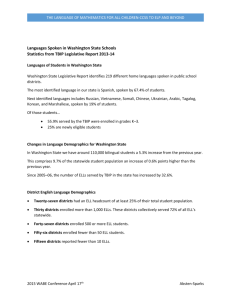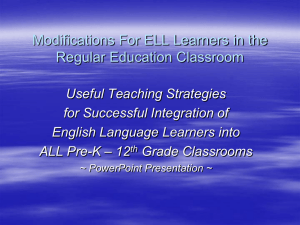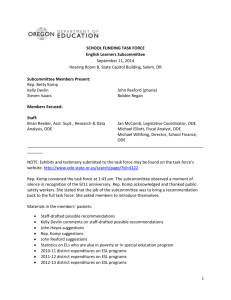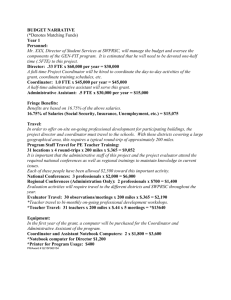English Learner Recommendations - Amended 9-11-14
advertisement
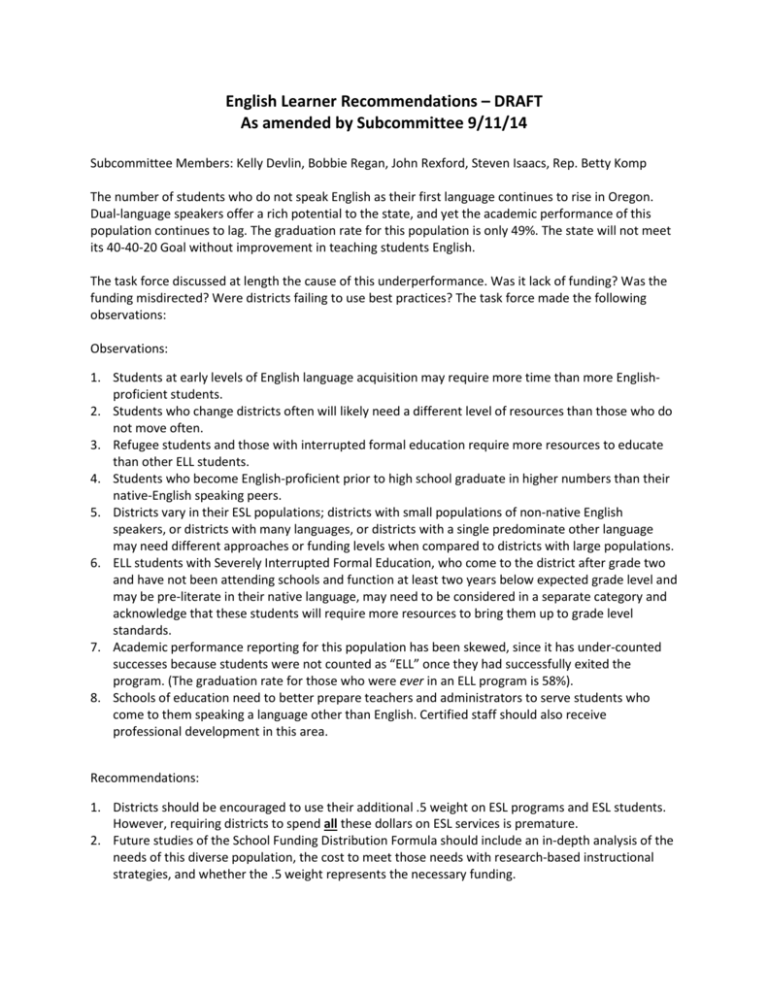
English Learner Recommendations – DRAFT As amended by Subcommittee 9/11/14 Subcommittee Members: Kelly Devlin, Bobbie Regan, John Rexford, Steven Isaacs, Rep. Betty Komp The number of students who do not speak English as their first language continues to rise in Oregon. Dual-language speakers offer a rich potential to the state, and yet the academic performance of this population continues to lag. The graduation rate for this population is only 49%. The state will not meet its 40-40-20 Goal without improvement in teaching students English. The task force discussed at length the cause of this underperformance. Was it lack of funding? Was the funding misdirected? Were districts failing to use best practices? The task force made the following observations: Observations: 1. Students at early levels of English language acquisition may require more time than more Englishproficient students. 2. Students who change districts often will likely need a different level of resources than those who do not move often. 3. Refugee students and those with interrupted formal education require more resources to educate than other ELL students. 4. Students who become English-proficient prior to high school graduate in higher numbers than their native-English speaking peers. 5. Districts vary in their ESL populations; districts with small populations of non-native English speakers, or districts with many languages, or districts with a single predominate other language may need different approaches or funding levels when compared to districts with large populations. 6. ELL students with Severely Interrupted Formal Education, who come to the district after grade two and have not been attending schools and function at least two years below expected grade level and may be pre-literate in their native language, may need to be considered in a separate category and acknowledge that these students will require more resources to bring them up to grade level standards. 7. Academic performance reporting for this population has been skewed, since it has under-counted successes because students were not counted as “ELL” once they had successfully exited the program. (The graduation rate for those who were ever in an ELL program is 58%). 8. Schools of education need to better prepare teachers and administrators to serve students who come to them speaking a language other than English. Certified staff should also receive professional development in this area. Recommendations: 1. Districts should be encouraged to use their additional .5 weight on ESL programs and ESL students. However, requiring districts to spend all these dollars on ESL services is premature. 2. Future studies of the School Funding Distribution Formula should include an in-depth analysis of the needs of this diverse population, the cost to meet those needs with research-based instructional strategies, and whether the .5 weight represents the necessary funding. 3. If a weighting change is proposed in the future, the subcommittee recommends that additional money be added to the State School Fund to avoid resource shifting and helping one group of students at the expense of another. 4. Any changes in the ESL formula should be evaluated with respect to the change’s effect on other student populations. 5. Poverty is an intrinsic factor in this population; no ESL program will be entirely successful without addressing issues that arise due to poverty. The in-depth study recommended by the task force should evaluate whether students who are both ELL and in poverty require a different weight that students who ELL but not in poverty. 6. The Department of Education should work with school districts to assure that the expenditure data for ESL programs is being reported accurately.
